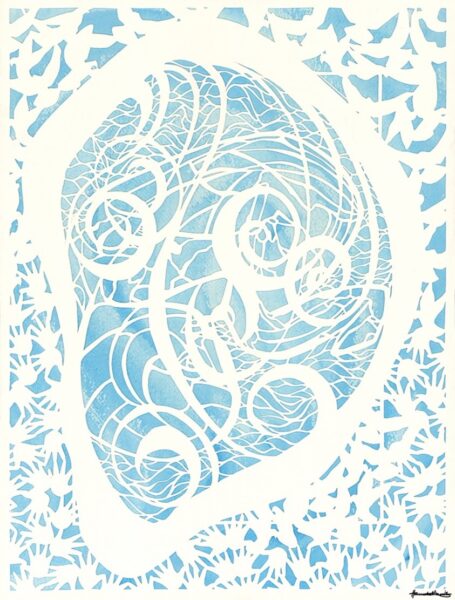Weekly Bible Devotional
“Close to Home: Seeking Sanctuary”
December 24, 2023
Theme connections:
After receiving the angel’s extraordinary news, Mary retreats to Elizabeth and Zechariah’s home to digest her new calling. She seeks refuge—physical safety and emotional protection. She receives a safe haven, a home for her heart to soon sing praise. Sanctuary and safe space is so crucial for everyone, especially the mother of Christ while she prepares to become a home for God. Sanctuary is anywhere God’s love dwells freely and abundantly.
Scripture: Luke 1:39-55
39 In those days Mary set out and went with haste to a Judean town in the hill country, 40 where she entered the house of Zechariah and greeted Elizabeth. 41 When Elizabeth heard Mary’s greeting, the child leapt in her womb. And Elizabeth was filled with the Holy Spirit 42 and exclaimed with a loud cry, ‘Blessed are you among women, and blessed is the fruit of your womb. 43 And why has this happened to me, that the mother of my Lord comes to me? 44 For as soon as I heard the sound of your greeting, the child in my womb leapt for joy. 45 And blessed is she who believed that there would be a fulfilment of what was spoken to her by the Lord.’
Mary’s Song of Praise
46 And Mary said,
‘My soul magnifies the Lord,
47 and my spirit rejoices in God my Saviour,
48 for he has looked with favour on the lowliness of his servant.
Surely, from now on all generations will call me blessed;
49 for the Mighty One has done great things for me,
and holy is his name.
50 His mercy is for those who fear him
from generation to generation.
51 He has shown strength with his arm;
he has scattered the proud in the thoughts of their hearts.
52 He has brought down the powerful from their thrones,
and lifted up the lowly;
53 he has filled the hungry with good things,
and sent the rich away empty.
54 He has helped his servant Israel,
in remembrance of his mercy,
55 according to the promise he made to our ancestors,
to Abraham and to his descendants for ever.’
Commentary on Luke 1:39-55 | by Elder Vilmarie Cintrón-Olivieri
When thinking about “sanctuary,” the lyrics of a Carrie Newcomer song hit close to home…
“Will you be my refuge, my haven in the storm,
Will you keep the embers warm when my fire’s all but gone?
Will you remember, and bring me sprigs of rosemary,
Be my sanctuary ’til I can carry on, carry on, carry on. . .”
In the song, Newcomer lists places, experiences, and metaphors to define sanctuary: “rest here in Brown Chapel… with a circle of friends… a quiet grove of trees… between two bookends.” We can imagine these as safe spaces, uplifting and welcoming. My own list would include grandma’s kitchen, watercolor paints, and the arms of a loved one. What would your list include? If you close your eyes, can you picture yourself there?
Wherever it is, a place where God’s love dwells freely and abundantly is sanctuary.
Hearing the news of her pregnancy, Mary sought such a place. As a pregnant teenager, poor and unwed, dangers and uncertainty—both physical and societal—surrounded her. With haste, she journeys to Elizabeth’s house.
Elizabeth—and the child in her womb—welcome and affirm her. Mary then bursts into a song of praise: “My soul magnifies the Lord, and my spirit rejoices in God my Savior” (v. 46-7). For three months, that home and the arms that received Mary became her safe haven. Elizabeth’s welcome, blessing, and care were safe space, just what she needed as she prepared for the important call ahead. Mary would give birth to Jesus and would educate him in his formative years. The world saw the imprint of this young woman in the life and teachings of her son, Jesus. Mary herself was sanctuary and Jesus’ first home.
Sanctuary is not only a place. It is also the people who say, “Here I am,” striving to create and to become a safe place for others. Will we be a refuge, someone’s haven in the storm, sanctuary? In the spirit of these two holy women, Mary and Elizabeth, may we offer ourselves as sanctuary for anyone in need of one—glorifying, with our actions, the One whose love, freely given, is our sanctuary, our home.
Guiding Questions:
– In her commentary, Vilmarie Cintrón-Olivieri describes places and spaces of sanctuary for her: “. . . grandma’s kitchen, watercolor paints, and the arms of a loved one.” She also writes: “Sanctuary is not only a place. It is also the people who say, ‘Here I am’ . . .” What are places and spaces of sanctuary for you? Who are the people in your life who provide safe refuge?
– As Mary seeks and finds refuge in Elizabeth’s embrace, she, in turn, becomes a sanctuary for God. Also known as the theotokos, Mary is the “God-bearer,” the dwelling place of God. When we receive safe refuge, we have the capacity to provide sanctuary for others. In what ways is your faith community providing sanctuary, becoming a space where God’s love dwells freely and abundantly?
From Pastor Roula Alkhouri:
In the part of the Christmas story for this week, we hear about someone who followed what God has called her to do, despite the fears of the people around her. This is the part about Elizabeth, the cousin of Mary, who provided Mary with a spiritual, emotional, and physical sanctuary at the hour of her need.
Mary was Elizabeth’s younger cousin. Elizabeth could have taken on the role of judgment against Mary. She could have warned Mary about all the possible dangers ahead. But Elizabeth was deeply grounded in God’s love herself and thus was able to see God in Mary’s life and pregnancy. When Mary got the news of her pregnancy, she went to visit her relative/cousin Elizabeth for three months. This would have been a long journey of about 80 miles. One would not take that kind of journey lightly. Mary spent the first three months of her pregnancy with Elizabeth. We know that the first three months are the most critical in any pregnancy. Without the support of Elizabeth, Mary could not have made it through this challenge in her life. Her ability to carry out the mission of her life depended on Elizabeth’s love which was manifested in deep listening, support, and mentoring. Elizabeth was the best support Mary could have had. We know this from the story of Elizabeth herself and from the greeting she gave Mary when she first saw her.
Elizabeth knew about faith, life, and brokenness in her life. She was unable to get pregnant for many years and struggled with the shame of that in her community. She was especially ashamed as she was the wife of a priest. Infertility would have been seen as a sign of God’s punishment. Her shame was great. Yet, her faith was even greater. As the wife of a priest, Elizabeth certainly would have had a long life of prayer. In fact, just before we are told about Mary’s pregnancy, we are told about Elizabeth and her husband Zechariah and their mystical experience of a divine messenger. This made Elizabeth ready to believe Mary and to validate her vision of God. She saw in the brokenness of Mary the very Spirit of God.
Who are the people we are called to bless and to love? Who needs an emotional sanctuary around us? Who needs a spiritual sanctuary? Who needs a physical sanctuary? Who do we go to when we need that kind of sanctuary?

Form the Artist: Dances for Joy
by Hannah Garrity
Inspired by Luke 1:39-45 (Mary goes to Elizabeth) | Paper lace with watercolor
As I worked through the creative process for this image, I was talking to my mother and showing her my inspiration board: images of babies in the womb, spinning or cuddling. She said that John dancing for joy in his mother’s womb is one of her favorite biblical images. I thought back to my study abroad in Glasgow, Scotland, at the Glasgow School of Art. I spent every day in a studio designed by Charles Rennie Mackintosh. Through windows the height of almost two stories, light poured into the room. I was interested in childbirth that year. I asked the local hospital if I could view one. They said, no, legitimately citing privacy concerns. Childbirth is rightfully a protected and private time—a time when women, the possessors of the womb, choose to use their bodies for the delivery of the children of God. As a woman in my early twenties, I had no plans of having children anytime soon. Truly, I was intrigued by the way we hide the earthy, natural, bloody parts of the process. All semester I painted fetuses, newborns crowning, mothers birthing alone. They were dancing in the womb. They were emerging from the
womb. They were patterns in a collage of orphaned children due to the AIDS epidemic. They were an American flag interwoven with articles of the strain of American military action on children overseas. They were newborns, still bloody, painted on patterned fabric with the stories of Peter Rabbit and the cow jumping over the moon. I even made a paint by number children’s book explaining the stages of childbirth. The clash of a facade of perfection and the tangible reality was and is ever-present in my every day.
Here the globe is drawn as the background flow of the image. This long view of the world acknowledges the earthy, bloody, tangible, pouring-out reality that Mary and Elizabeth will soon embody to bear their sons. There is so much liquid everywhere. The central story of the text emerges as John dances with joy in his mother’s womb of this world. Around him the patterns of his baptisms flow outward into the miracles of Jesus, woven into the flow of landforms and waters on the map.
Comparison is the thief of joy, my cousin tells me. God’s children need us to dance for joy when we encounter one another. Where in my daily routines can I remove the facade of perfection, or break through it, and embrace the tangible reality of a beautiful and wonderful, earthy joy?
Poem: Come on Home
By Sarah Speed
We all know the feeling—
the shaky ground,
sinking sand,
water-is-rising,
sun-is-fading feeling
that makes steady breathing
an entire miracle,
and holding back tears
a marvel in and of itself.
And when those days come,
I call my parents.
And I call my church,
and I call my friends,
and they say in unison
what God has said
from the very beginning,
which is, “Come on home.”
Is there anything more healing
than an open door?
If you’re seeking sanctuary,
if the waters are rising—
listen.
It may be hard to hear,
but God is always saying,
“Come on home.”

